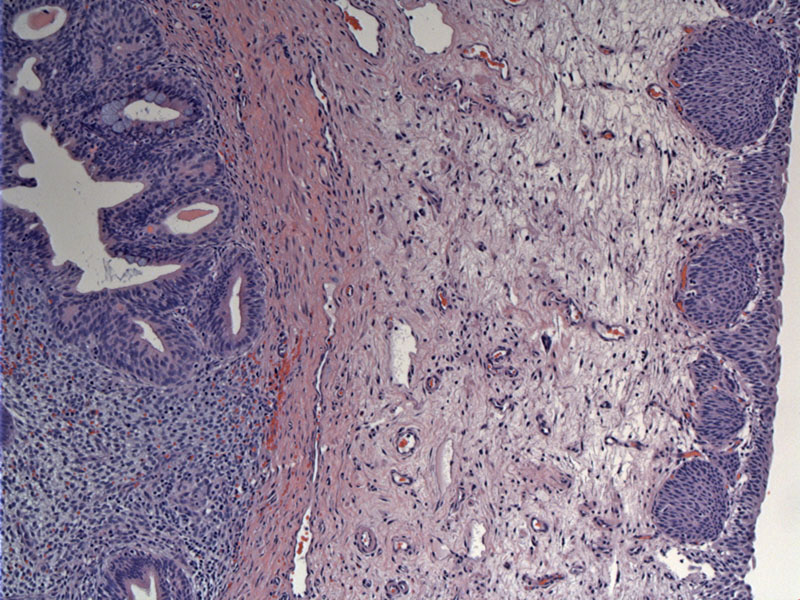System: Genitourinary: Bladder: Benign: Endometriosis

System: Genitourinary: Bladder: Benign: Endometriosis



surface bladder mucosa is seen at the far right - the underlying glands are endometriosis and cystitis glandularis Image
higher power of the underlying glands shows cystitic cystica to the right, and endometriotic glands and spindled stroma on the left Image
other glands involve the deeper parts of the bladder wall - shown here is involvement of the muscularis propria Image
Involvement of the GU tract is associated with other forms of pelvic endometriosis, and it cannot be considered as an independent form of the disease. Endometriosis involving the urinary tract extends to the bladder in 84% of cases
Diagnosis can be difficult because often patients present with non-specific symptoms which overlap with those of urinary tract infections, chronic urethral syndrome, overactive bladder, vulvodynia and interstitial cystitis and similar diseases in women. When a bladder nodule is recognized, it has to be differentiated from bladder carcinoma, varices, papillomas or angiomas.
No large-scale studies are available which compare medical to surgical therapy in bladder endometriosis lesions. Many are of the opinion that medical treatment is palliative, as symptoms always recur after discontinuation of therapy. On the contrary, laproscopic treatment such as segmental resection of the involved wall or an extramucosal dissection of the bladder may therefore be preferable.